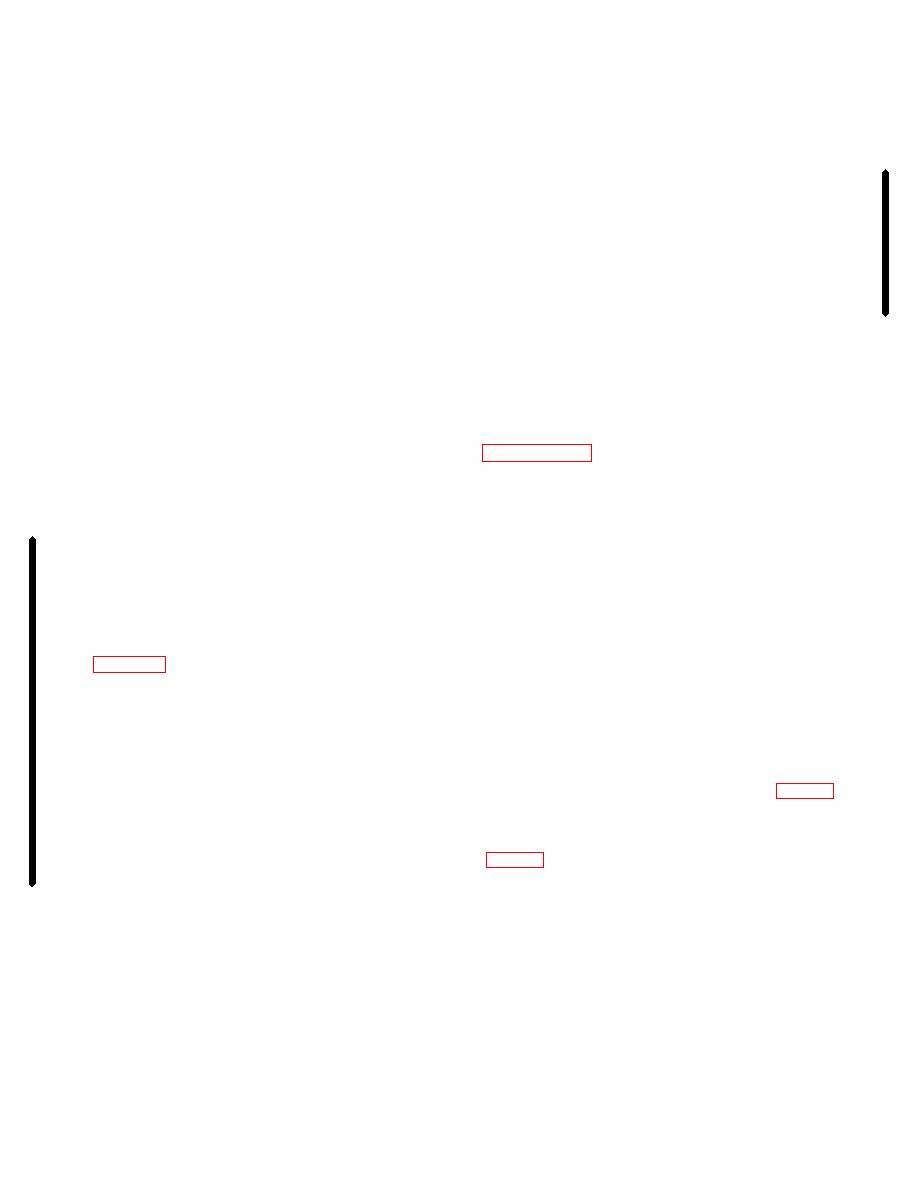
TM 10-1670-201-23
T.O. 13C-1-41
NAVAIR 13-1-17
Section IV. PATCHING PROCEDURES
result of the patching process. An obstructed radial
3-11. General.
seam channel will prevent free movement of a canopy
Patching is a procedure used to repair holes which
line in a continuous line canopy.
cannot be darned in airdrop equipment constructed from
textile materials. This procedure applies to items such
NOTE
as parachute canopies, deployment bags, packs, cargo
If the canopy has a net, the patch
bags, and other assorted canvas and webbing items.
may be placed on top of the net
when stitching the patch to the lower
3-12. Parachute Canopy Patching Limitations.
lateral band.
The following is a list of limitations which are
applicable to all personnel and cargo parachutes, except
3-13. Making a Basic Patch.
ring-slot cargo extraction parachutes and ejection seat
A basic patch is used to repair damaged cloth when
personnel parachute systems.
the affected area is no closer than 1 inch from a radial
WARNING
seam, edge reinforcement or lower lateral band. Should
The limitations prescribed for para-
a damaged area be closer than 1 inch to the cited areas,
chute canopy patching will be
a miscellaneous patch will be made as detailed in
stringently adhered to under all
circumstances and without any
used to apply a basic patch and the procedures for
deviations.
performing each method are outlined in paragraphs a
through c as follows:
a. A patch will not be applied to a damaged area
NOTE
that has been previously patched.
A basic patch for airdrop equipment
b. There is no limitation to the number of patches
other than a parachute canopy will
or size of patch to each canopy gore section or gore
be square or rectangular in shape. A
panel. However, determination should be made as to
basic patch applied to a parachute
the most economical method to be used, i.e., two or
canopy by sewing will be square or
more patches versus one large patch or one large patch
versus a section replacement. A patch applied to a
rectangular in shape. A parachute
parachute canopy may extend from radial seam to radial
canopy basic patch constructed from
seam. Table 3-2 prescribes sizes of parachute mending
adhesive nylon parachute mending
cloth patches for cargo parachutes.
cloth or balloon cloth may be
c. Use of mending cloth on personnel parachutes.
shaped, rectangle, or triangle, as
Use no more than two mending cloth patches on a
required.
canopy section. Limit the size of the finished patch to
a. The Sewn Patch. The primary method of
10 inches. Round the corners of the patches to 1-inch
applying a basic patch is by sewing. When using this
radius. Use size E nylon thread, sew a row of 7 to 11
method of patching on a parachute canopy, the patch
stitches per inch 1/16-inch in from outer edge of the
will be applied to the inside of the canopy (fig. 3-4). On
patch.
all other airdrop equipment, the patch may be applied
on either the inside or the outside of the item as
d. Patching of a continuous line canopy may be
prescribed by the applicable item equipment publication
performed in a manner similar to a noncontinuous line
canopy. However, precautions will be taken to insure
the canopy radial seam channel is not obstructed as a
Change 3 3-6



